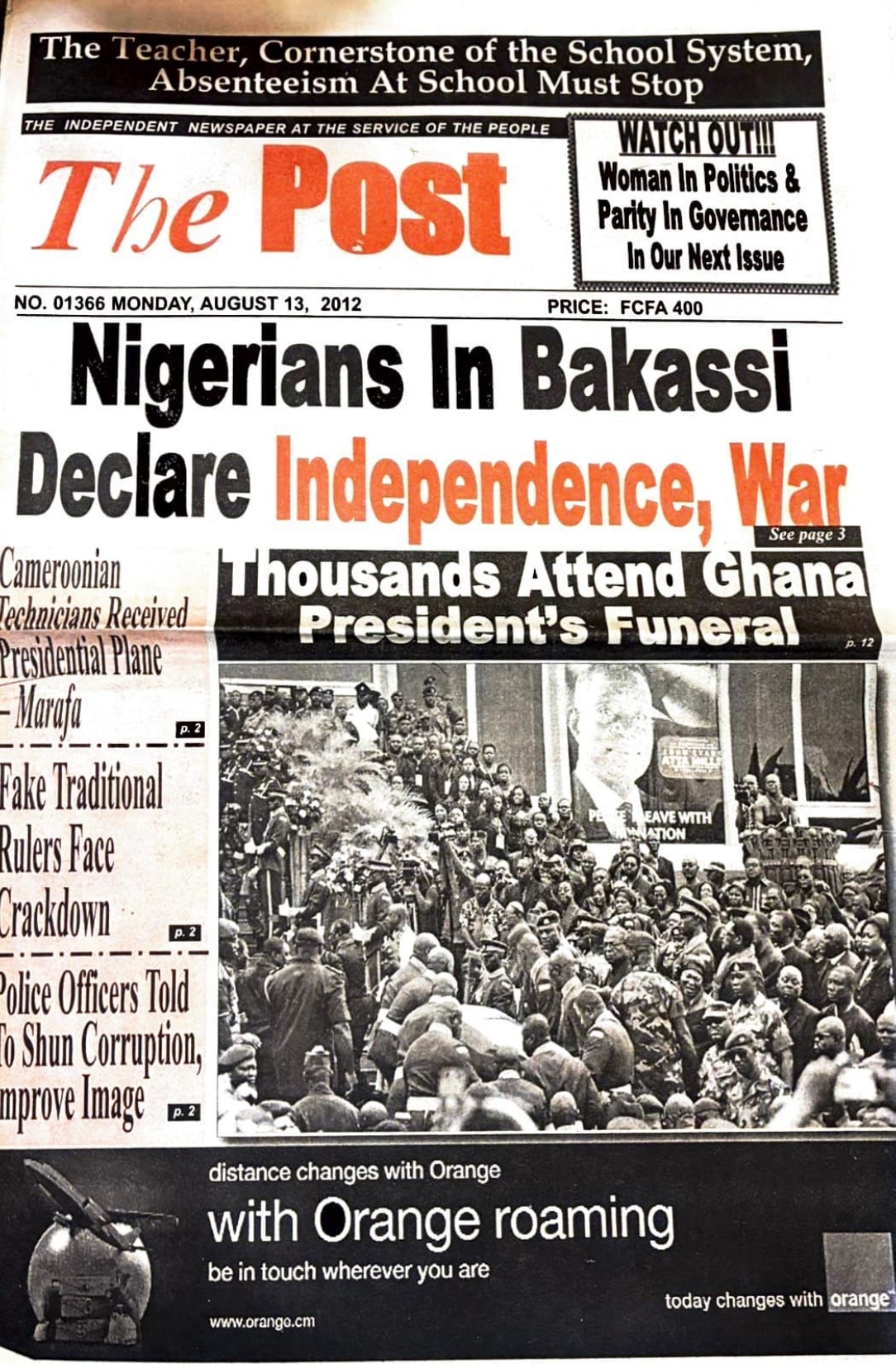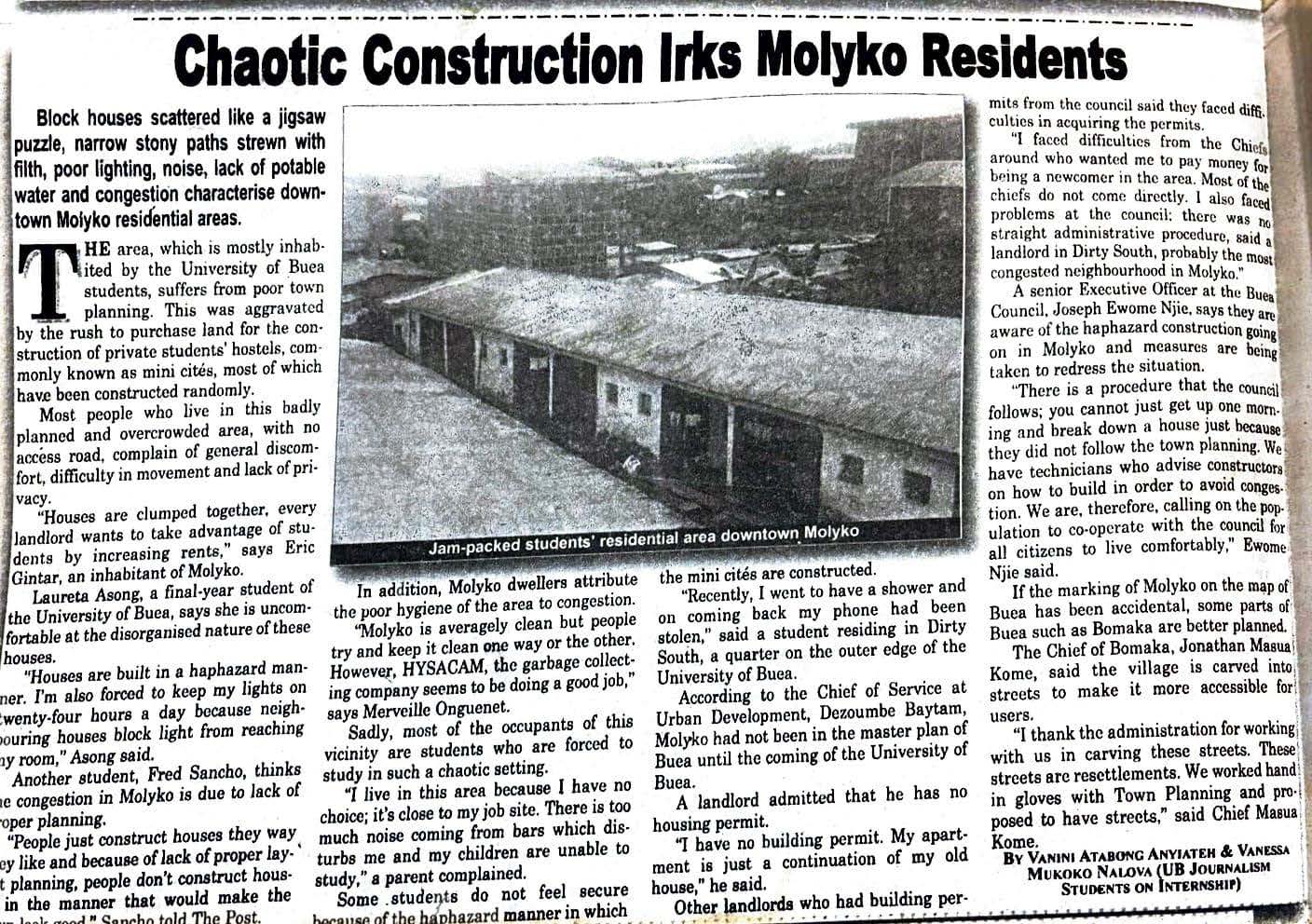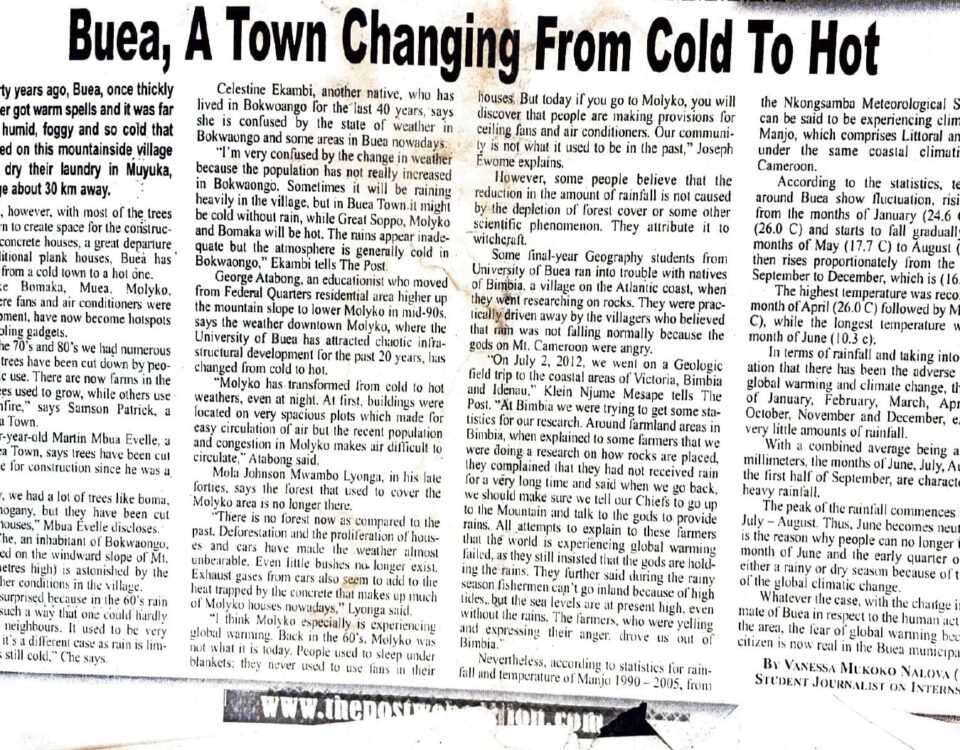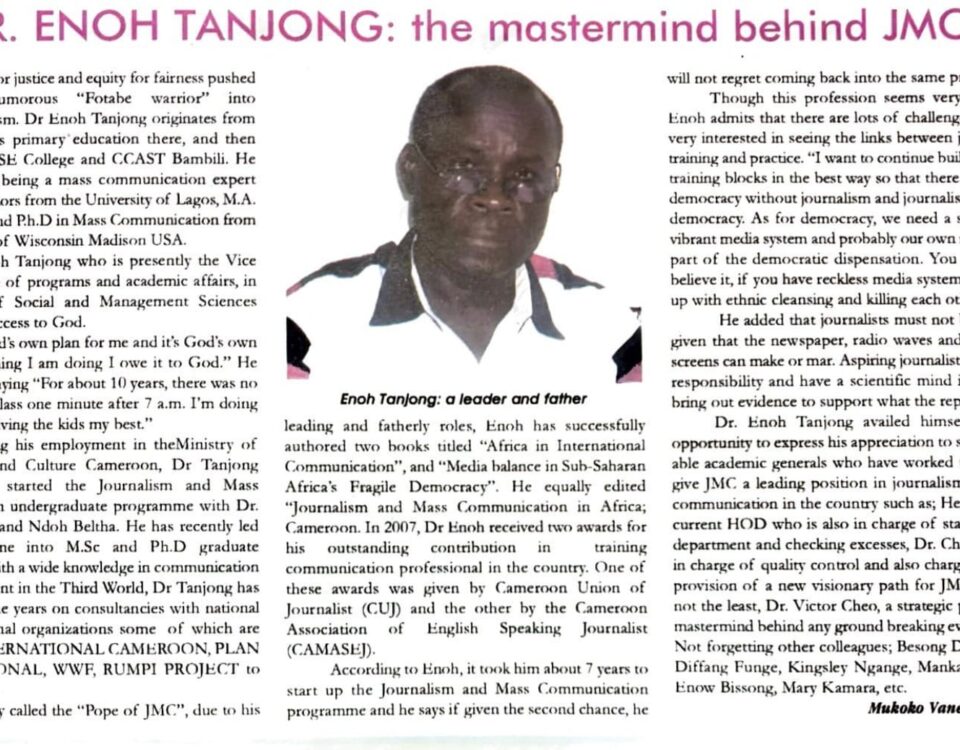Block houses scattered like a jigsaw puzzle, narrow stony paths strewn with filth, poor lighting, noise, lack of potable water and congestion characterise downtown Molyko residential areas.
Category
Writing
Date of Publication
August 2012
Publication Name
The Post Newspaper
OVERVIEW
During my 2012 internship with the Post newspaper
Cameroon, I actively contributed to the editorial team
by researching, writing, and editing news content. My
work culminated in the publication of two distinct news
articles, showcasing my ability to craft engaging and
informative pieces for a broad audience.


THE ARTICLE
Block houses scattered like a jigsaw puzzle, narrow stony paths strewn with filth, poor lighting, noise, lack of potable water and congestion characterise downtown Molyko residential areas.
The area, which is mostly inhabited by the University of Buea students, suffers from poor town planning. This was aggravated by the rush to purchase land for the construction of private students’ hostels, commonly known as mini cité, most of which have been constructed randomly.
Most people who live in this badly planned and overcrowded area, with no access road, complain of general discomfort, difficulty in movement and lack of privacy.
“Houses are clumped together, every landlord wants to take advantage of students by increasing rents,” says Eric Gintar, an inhabitant of Molyko.
Laureta Asong, a final-year student of the University of Buea, says she is uncomfortable at the disorganised nature of these houses.
“Houses are built in a haphazard manner. I’m also forced to keep my lights on twenty-four hours a day because neighbouring houses block light from reaching my room,” Asong said.
Another student, Sancho, thinks the congestion in Molyko is due to lack of proper planning.
“People just construct houses the way they like and because of lack of proper layout planning, people don’t construct houses in the manner that would make them look good..”. Sancho tod The Post.
In addition, Molyko dwellers attribute the poor hygiene of the area to congestion.
“Molyko is averagely clean but people try and keep it clean one way or the other.” However, HYSACAM, the garbage collecting company seems to be doing a good job, says Merveille Onguene.
Sadly, most of the occupants of this vicinity are students who are forced to study in such a chaotic setting.
“I live in this area because I have no choice; it’s close to my job site. There is too much noise coming from bars which disturbs me and my children are unable to study,” a parent complained.
“Recently, I went to have a shower and on coming back my phone had been stolen,” said a student residing in Dirty South, a quarter on the outer edge of the University of Buea.
According to the Chief of Service at Urban Development, Dezoumbe Baytam, Molyko had not been in the master plan of Buea until the coming of the University of Buea.
Some students do not feel secure in the haphazard manner in which mini cités are constructed.
A landlord admitted that he has no housing permit.
“I have no building permit. My apartment is just a continuation of my old house,” he said.
Other landlords who had building permits from the council said they faced difficulties in acquiring permits.
“I faced difficulties from the Chief around who wanted me to pay money, being a newcomer in the area. Most of the chiefs do not come directly. I also faced problems at the council; there was no straight administrative procedure,” said a landlord in Dirty South, probably the most congested neighbourhood in Molyko.
A senior Executive Officer at the Buea Council, Joseph Ewome Njie, says they are aware of the haphazard construction going on in Molyko and measures are being taken to redress the situation.
“There is a procedure that the council follows; you cannot just get up one morning and break down a house just because they did not follow the town planning. We have technicians who advise constructors on how to build in order to avoid congestion. We are therefore calling on the population to co-operate with the council for all citizens to live comfortably,” Ewome Njie said.
If the marking of Molyko on the map of Buea has been accidental, some parts of·Buea such as Bomaka are better planned.
The Chief of Bomaka, Jonathan Masuai Kome, said the village is carved into streets to make it more accessible for users.
“I thank the administration for working with us in carving these streets. These streets are resettlements. We worked hand in gloves with Town Planning and proposed to have streets,” said Chief Masuai Kome.
The Post Newspaper article, August 13th, 2012.


